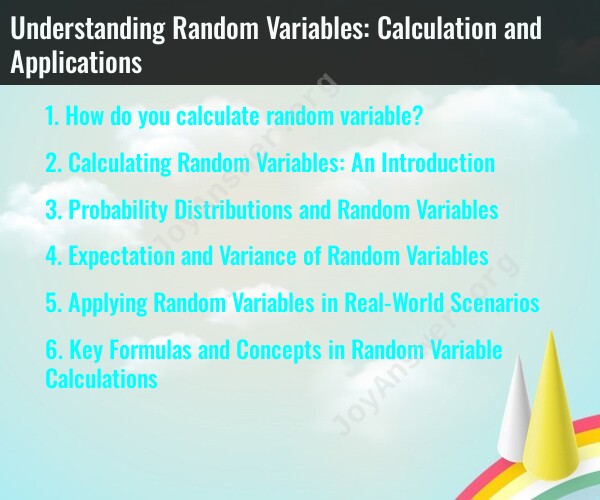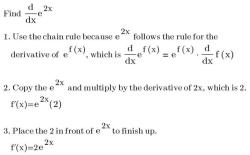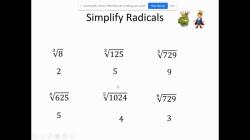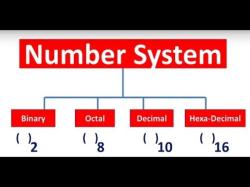How do you calculate random variable?
Random variables are a fundamental concept in probability and statistics. They are used to model and describe uncertain or random outcomes in various situations. Calculating and working with random variables involves understanding their probability distributions and characteristics. Here's how you calculate and work with random variables:
Define the Random Variable (X):Start by defining the random variable (X), which represents the quantity or outcome of interest in a probabilistic context. For example, X could represent the number of heads when flipping a coin.
Identify the Sample Space (S):The sample space (S) is the set of all possible outcomes for the random variable X. It includes every possible value that X can take. For the coin example, the sample space S = {0, 1} because there are two possible outcomes: 0 heads or 1 head.
Assign Probabilities:Determine the probability of each outcome in the sample space. These probabilities are usually based on the nature of the random process or experiment. In the coin example, you would assign a probability of 0.5 to getting 0 heads (no heads) and a probability of 0.5 to getting 1 head.
Probability Distribution (P(X)):The probability distribution of a random variable, denoted P(X), describes how the probabilities are distributed among the possible values of X. It specifies the probability of each value in the sample space. In the coin example, P(X = 0) = 0.5 and P(X = 1) = 0.5.
Expectation (Mean):The expectation or mean (E[X]) of a random variable is a measure of its central tendency. It is calculated by summing the products of each value of X and its corresponding probability. For the coin example: E[X] = (0 * 0.5) + (1 * 0.5) = 0.5.
Variance and Standard Deviation:The variance (Var[X]) and standard deviation (σ) of a random variable measure its spread or variability. Variance is calculated as the average of the squared differences between each value of X and the mean. Standard deviation is the square root of the variance.
Cumulative Distribution Function (CDF):The cumulative distribution function (CDF) describes the probability that X is less than or equal to a specified value. It is often denoted as F(X). For a discrete random variable, the CDF is calculated by summing the probabilities of all values less than or equal to the specified value.
Probability Density Function (PDF):In the case of continuous random variables, the probability density function (PDF) is used instead of a probability distribution. The PDF represents the likelihood of X falling within a particular range of values.
Applications of Random Variables:Random variables are widely used in various fields, including:
- Probability and Statistics: Random variables are essential for defining probability distributions and conducting statistical analyses.
- Finance: They are used to model stock prices, interest rates, and other financial variables.
- Physics: In quantum mechanics, random variables represent the outcomes of measurements.
- Engineering: Random variables are used to model uncertainty in engineering systems.
- Biostatistics: They are applied to model medical and biological data.
Understanding and working with random variables is fundamental for conducting probabilistic and statistical analyses, making predictions, and solving real-world problems in numerous domains.
Calculating Random Variables: An Introduction
A random variable is a function that assigns a numerical value to each outcome of an experiment or random event. For example, the number of heads obtained in a flip of a coin is a random variable, since it can take on the values 0 or 1.
To calculate a random variable, we need to know the probability distribution of the random variable. The probability distribution of a random variable is a table or function that shows the probability of each possible outcome.
Probability Distributions and Random Variables
There are many different types of probability distributions, but some of the most common include:
- Binomial distribution: The binomial distribution is used to model experiments with two possible outcomes, such as flipping a coin or rolling a die.
- Normal distribution: The normal distribution is used to model continuous random variables, such as human height or weight.
- Poisson distribution: The Poisson distribution is used to model experiments with a fixed number of events, such as the number of cars that pass through an intersection in a given hour.
Expectation and Variance of Random Variables
The expectation of a random variable is the average value of the random variable. The variance of a random variable is a measure of how spread out the values of the random variable are.
The expectation and variance of a random variable can be calculated using the following formulas:
Expectation: E(X) = Σ xP(x)
Variance: Var(X) = E[(X-E(X))^2]
where:
- X is the random variable
- x is a possible value of the random variable
- P(x) is the probability of the event that X = x
Applying Random Variables in Real-World Scenarios
Random variables can be used to model a wide variety of real-world phenomena, such as:
- The number of customers that visit a store in a day
- The amount of rainfall in a given month
- The time it takes to complete a task
- The number of goals scored in a soccer game
By using random variables to model these phenomena, we can make predictions and forecasts about the future.
Key Formulas and Concepts in Random Variable Calculations
Here are some key formulas and concepts in random variable calculations:
- Probability distribution: The probability distribution of a random variable shows the probability of each possible outcome.
- Expectation: The expectation of a random variable is the average value of the random variable.
- Variance: The variance of a random variable is a measure of how spread out the values of the random variable are.
- Central Limit Theorem: The Central Limit Theorem states that the distribution of the sample mean will be approximately normally distributed, regardless of the distribution of the population, as long as the sample size is large enough.
Conclusion
Random variables are a powerful tool for modeling and analyzing uncertainty. By understanding the basics of random variable calculations, we can make better predictions and forecasts about the future.











